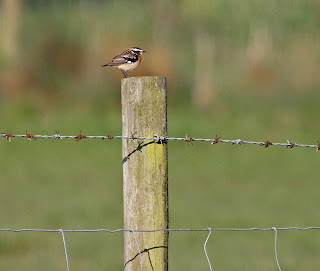 |
| bluebells, Church Wood |
Bluebells are just at their best at the moment. Yesterday I took an opportunity to see the impressive expanses of bluebell carpeting the woodland floor at
Church Wood RSPB nature reserve near Beaconsfield, Buckinghamshire. Overnight rain had cleared leaving water droplets coating the flowers and glistening jewel-like in the early morning rays of sunlight.
 |
| and more bluebells.... |
It has also been a busy period for bird survey work - this morning the BTO Breeding Bird Survey. My eleventh year counting birds in one kilometre square near Moreton Pinkney in Northamptonshire. In about two hours I clocked up thirty-nine species, including Sedge Warbler and Lesser Whitethroat.
 |
| dilapidated barn on my BBS route - a favoured haunt of Stock Doves |
Sadly no Tree Sparrows - this may be the first year that I draw a blank - there seem to be fewer each year. At least I can still see them in my back garden - up to four on the feeders over the weekend.
 |
| Tree Sparrows snacking on red millet in my back garden |
Last week I completed my first wading bird survey of the season, part of the annual study of wading birds in the Upper Thames organised by RSPB. This year I am surveying a new area for me - the Middle Cherwell Valley between Somerton and Clifton. I managed to pick a lovely sunny morning, and there were plenty of birds, including a couple of pairs of Curlew, Wheatear, Snipe and Yellow Wagtail.
 |
| Misty morning, Middle Cherwell Valley |
 |
| Wet grassland and oilseed rape, Middle Cherwell Valley |
Baby birds are starting to appear, last weekend it was fledgling blackbirds in the garden.
 |
| blackbird fledgling: "feed me" |
Hopefully they will soon be joined by some robins - there are four well grown chicks in this nestbox.
 |
| look carefully and you can see both adult robins on the nest! |
 |
| just fed the chicks |
Finally, just over a week ago now, I managed to get a few nice pics of a Dunlin that dropped into Grimsbury Reservoir.
 |
| Dunlin - Grimsbury Reservoir, Banbury |





























